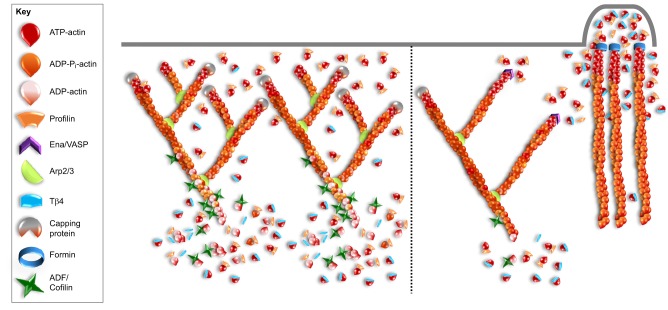Fig. 3.
G-actin regulated assembly of actin networks. A scenario where profilin and Tβ4 regulate the assembly of specific actin networks. On the left, there is increased ADF/cofilin and capping protein activity; this leads to increased disassembly and barbed-end capping, thus resulting in an increased monomer pool. This creates a more densely branched Arp2/3-mediated actin network because nucleation, rather than elongation, becomes favored. Here, the role of profilin is predominantly to recycle the monomers back into a polymerization-competent pool. On the right, ADF/cofilin and capping protein activity is decreased, resulting in a smaller monomer pool. Consequently, competition for a limited supply of monomers enhances filament elongation by barbed-end polymerases, such as Ena/VASP and formins, and reduces Arp2/3-mediated branching due to a bias formed through profilin-bound actin. Additionally, Tβ4 prevents cytosolic actin monomers from polymerizing at barbed ends of Arp2/3-mediated filaments throughout the lamellipodia (right-hand side of this panel) and selectively releases G-actin near the plasma membrane, where it undergoes formin-mediated polymerization.

